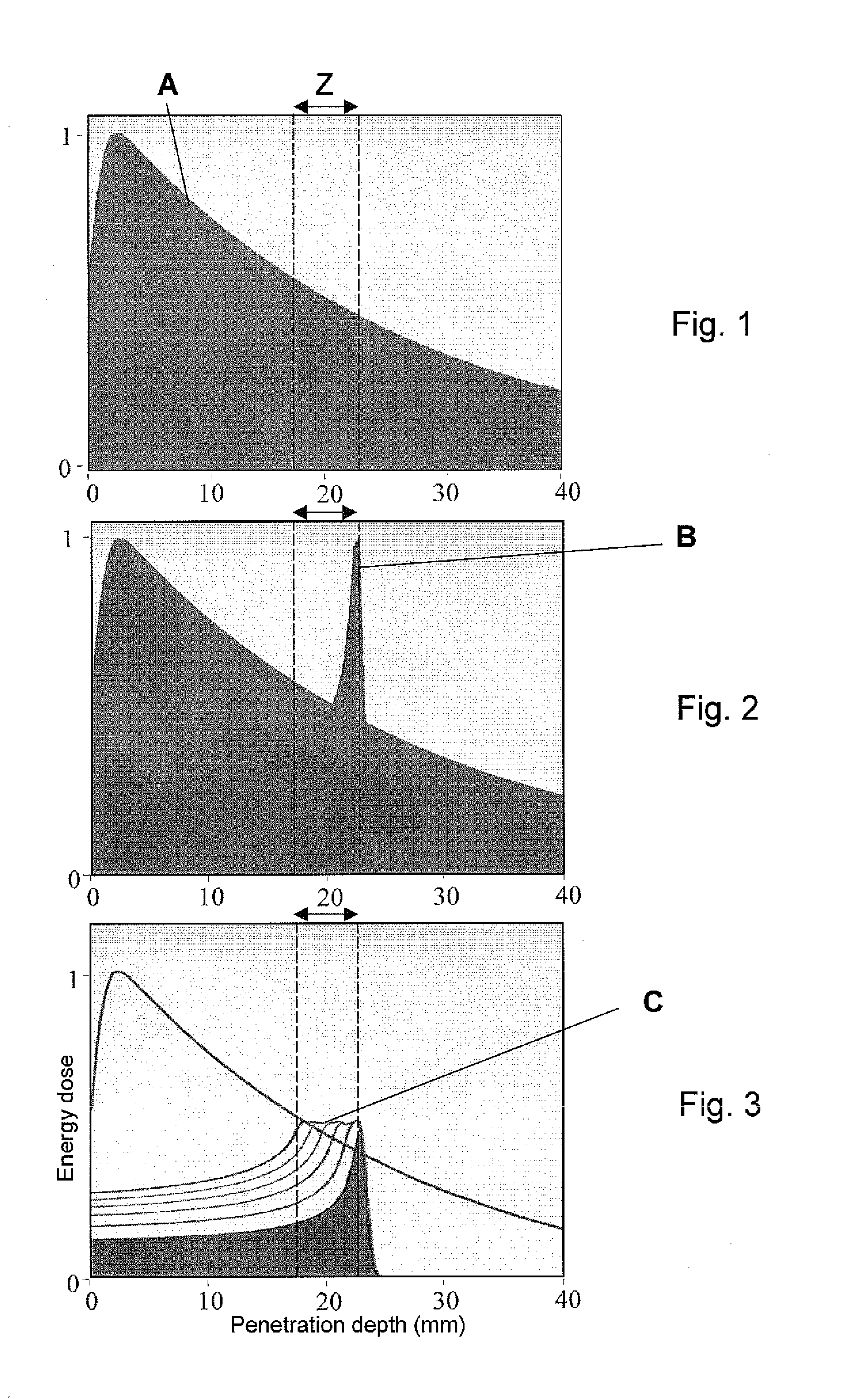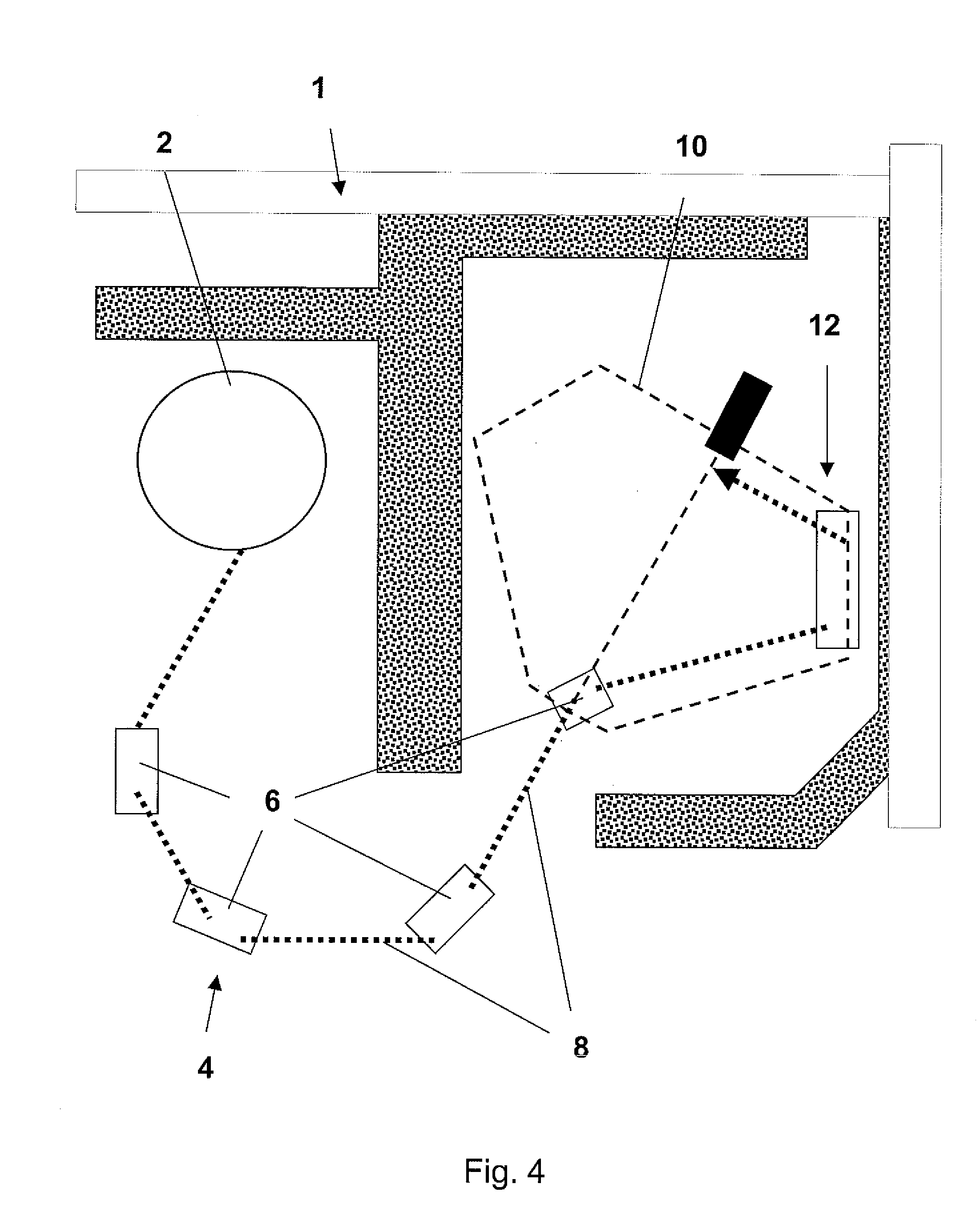Irradiation System and Irradiation Method
a technology which is applied in the field of irradiation system and irradiation method, can solve the problems of continuous intensity loss, and achieve the effects of increasing the safety of the system, reducing the risk of isolated data corruption, and rapid and efficient plausibility check
- Summary
- Abstract
- Description
- Claims
- Application Information
AI Technical Summary
Benefits of technology
Problems solved by technology
Method used
Image
Examples
Embodiment Construction
[0043]To achieve the uniform irradiation profile of tumor tissue in the human body shown in FIG. 3 or a profile which can be adapted as desired, the system for irradiating patients with charged particles according to the invention comprises a raster scanning irradiation unit 1, which is illustrated schematically in FIG. 4. The raster scanning irradiation unit 1 comprises a particle accelerator 2 for charged particles. Protons or heavy ions, for example, can be used as the charged particles for the irradiation of tumors. The raster scanning irradiation unit 1 also comprises a beam guide unit 4, which consists of several beam guide magnets 6 and usually straight beam guide sections 8 arranged between the magnets. One of the most important requirements when irradiating patients with charged particles is that the beam be guided with extreme precision. The particle beam is conducted by the beam guide unit 4 into a treatment room, in which, in the present example, a gantry 10 is arranged,...
PUM
 Login to View More
Login to View More Abstract
Description
Claims
Application Information
 Login to View More
Login to View More - R&D
- Intellectual Property
- Life Sciences
- Materials
- Tech Scout
- Unparalleled Data Quality
- Higher Quality Content
- 60% Fewer Hallucinations
Browse by: Latest US Patents, China's latest patents, Technical Efficacy Thesaurus, Application Domain, Technology Topic, Popular Technical Reports.
© 2025 PatSnap. All rights reserved.Legal|Privacy policy|Modern Slavery Act Transparency Statement|Sitemap|About US| Contact US: help@patsnap.com



